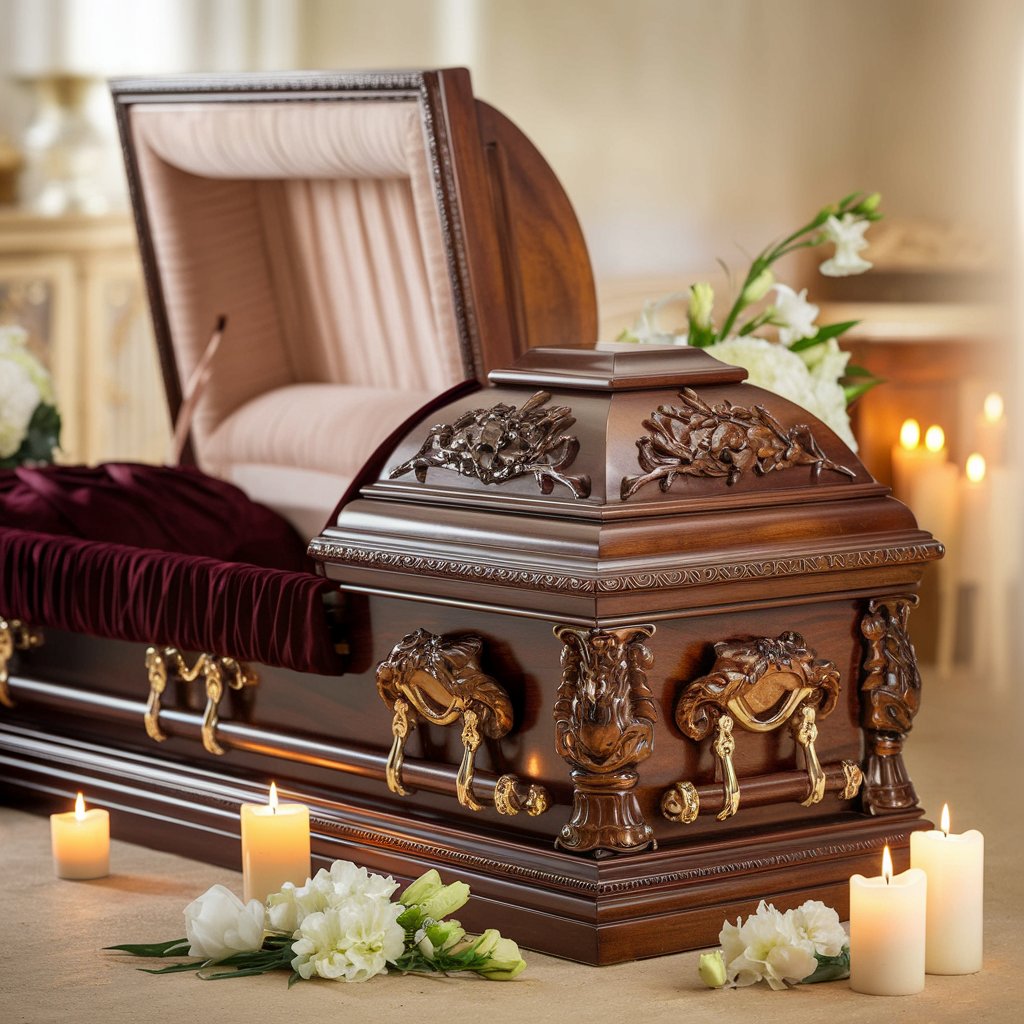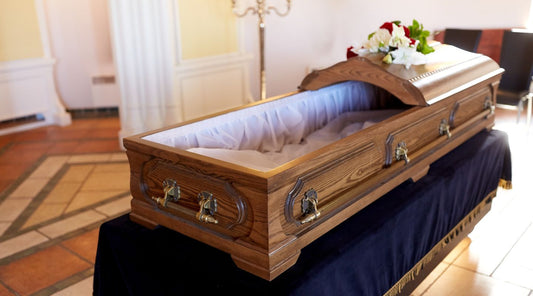
How to Build a Casket: A Complete DIY Guide with Step-by-Step Plan
Building a casket might sound unusual, but it's becoming a powerful way to say goodbye. Learning how to build a casket is much like creating something meaningful with your own hands, like building a rocking chair or a family dining table, but with deeper significance.
You don't need to be a master woodworker to take on this project. Basic tools, some patience, and attention to detail will get you there. More people are choosing this path not just to save money, but to add a personal touch to their final farewell.
This guide will walk you through every step - from picking the right wood to adding those final, meaningful touches. We'll cover the practical stuff, like measurements and tools, but also talk about ways to make it special. Whether you're building this for yourself or a loved one, it's a project that carries weight and purpose.

Understanding the Basics of How to Build a Casket
A standard casket typically measures 84 inches long, 28 inches wide, and 23 inches high. But don't worry - you can adjust these measurements slightly to fit your needs. Just make sure to check local regulations first, as some cemeteries have specific size requirements.
For tools, you'll need basics like a circular saw, drill, measuring tape, and screwdrivers. A router is helpful but not essential. The project usually takes about 20-25 hours of work, spread over several days to allow for glue drying and finishing.
Safety comes first - always wear eye protection, a dust mask, and work in a well-ventilated area. Wood dust can be harmful, especially when working with hardwoods.
Before cutting any wood, gather your materials and create a dedicated workspace. You'll need about 50-60 square feet of clear area. Most builders work on sawhorses or a sturdy workbench that can support at least 100 pounds.
Think of this as building a large box with specific requirements - breaking it down this way makes it less overwhelming.
Material Selection
Pine stands out as the most practical choice - it's affordable, easy to work with, and naturally biodegradable. You'll need about 60-70 board feet of 1-inch thick lumber. Cedar and oak are excellent alternatives but cost more. Avoid pressure-treated wood as it contains chemicals that aren't environmentally friendly.
For hardware, you'll need:
- 6-8 sturdy handles (stainless steel holds up best)
- 2-3 lid hinges
- A simple locking mechanism
- About 100 wood screws (1.5 to 2 inches long)
Interior lining typically uses cotton or linen fabric - plan for about 5-6 yards. Polyester batting works well for padding. Some builders use natural wool, which is pricier but completely biodegradable.
Cost-wise, expect to spend $400-600 total for pine construction. This jumps to $800-1,200 with premium woods. Compare this to commercial caskets that often start at $2,000.
Remember to get extra materials - about 20% more than calculated. Better to have spare pieces than run short midway.
Preparation Phase
Start by clearing and leveling your workspace. A garage or covered area works best - you'll need good lighting and protection from moisture. Set up your sawhorses about 4 feet apart and cover the floor with drop cloths for easy cleanup.
Before cutting, let your lumber acclimate to your workspace for 48-72 hours. This critical step in how to build a casket prevents warping later. While waiting, create a full-size paper template on your floor using builder's paper or cardboard. This helps visualize the project and catch measurement issues early.
Your cutting list should include:
- Two 84" × 28" panels (top and bottom)
- Four 23" × 84" panels (sides and ends)
- Support braces every 16 inches
- Lid trim pieces
Mark all your pieces clearly before cutting. Use a carpenter's square for accuracy - even small errors multiply in large projects. Label each piece with its location and grain direction. This simple step saves confusion later and ensures wood grain matches for better appearance.
Take time now to organize your hardware and tools within easy reach. It makes the building process smoother.

Construction Process
Learning how to build a casket begins with the base - it's your foundation. Cut your bottom panel and add support strips (1x2 inches) every 16 inches across the width. These prevent sagging. Attach them using wood glue and 1.5-inch screws. Pro tip: drill pilot holes to prevent splitting.
Moving to the sides, position your long panels first. They should overlap the end panels for stronger corners. Apply wood glue generously at joints, then secure with screws every 8 inches. Keep a damp cloth handy to wipe away glue squeeze-out immediately - dried glue won't stain evenly.
For the lid, you're actually building two pieces - a main lid and a viewing panel (if desired). The main lid needs reinforcement to prevent warping. Create a frame using 1x2 strips around the perimeter and two cross-supports. Cover this frame with your top panel, using glue and screws. Sand the edges slightly rounded for a softer look.
Installing hinges is crucial - use three heavy-duty brass hinges for the main lid. Position them one foot from each end and one in the middle. Make sure they're perfectly aligned or your lid won't close properly.
Add corner braces inside for extra stability. These triangular pieces (about 4x4 inches) strengthen the box significantly. Glue and screw them into place at all eight corners.
For handles, mark their positions carefully - typically 16 inches from each end and centered on the height. Use a template to ensure they're all at the same height. Install with bolts, not just screws, and add backing plates inside for strength.
The trickiest part is fitting the lid. Leave a 1/16-inch gap around all edges for smooth operation. Test the lid several times, adjusting hinge positions if needed. A perfect fit here makes all the difference in the final appearance.
Remember to work systematically - complete each step fully before moving to the next. This prevents having to backtrack or fix issues later.
Interior Work
Start with a layer of 1/2-inch foam padding on the bottom and sides. Cut it slightly larger than needed and trim after securing. Use spray adhesive designed for foam - regular wood glue won't work here.
Layer batting over the foam for softness. Two layers usually give the right depth. Wrap it around corners smoothly, avoiding bunching. Staple it every 4 inches along the top edges, keeping tension even.
For the fabric lining, cotton broadcloth or silk work well. Measure twice - you'll need about 3 yards for sides and bottom, plus extra for the lid. Start from the head end, working your way down. Use upholstery pins to test the placement before final stapling. Create neat pleats in corners for a professional look.
The pillow needs special attention. Make it firmer than a regular pillow - about 4 inches thick when compressed. Fill with polyester fiberfill or natural wool. Add a zipper to the cover for adjustability.
Tuck all raw edges under and secure with decorative trim to hide staples. This finishing touch makes everything look polished.
Finishing Touches
Start with thorough sanding - work through grits 120, 180, then 220. Pay extra attention to edges and corners where hands might touch.
For the finish, tung oil offers natural protection while highlighting wood grain. Apply 3-4 thin coats, waiting 24 hours between each. Unlike polyurethane, it's eco-friendly and won't seal the wood completely.
Polish any metal hardware with a soft cloth. If using brass, a light coat of carnauba wax prevents tarnishing. Check all moving parts - hinges should swing smoothly, handles should be secure.
Test the lid one final time. It should close gently, without gaps. Add small rubber bumpers at contact points to prevent wood-on-wood noise.
Personal Touches
A significant aspect of learning how to build a casket is personalization. Consider wood-burning meaningful symbols or dates into the exterior - many choose family crests, favorite quotes, or nature scenes. Some builders add hidden compartments for letters or small mementos.
Natural decorations work beautifully - pressed flowers or leaves can be sealed under clear tung oil. For military veterans, service insignias can be carefully inlaid into the wood.
The interior can hold personal touches too. Quilt squares from family blankets make meaningful patches in the lining. Some families sew messages into the pillow or create a memory pocket in the lid lining.
Remember, these touches should reflect the person's life story - keep them subtle but significant.
Conclusion
While building a casket can be a meaningful project, it requires significant time, skill, and dedication. For those seeking professional-grade caskets with similar personalized touches, Trusted Caskets offers a wide selection of customizable options. Their expert craftsmanship ensures both quality and compliance with all funeral home requirements, providing peace of mind during a sensitive time.


